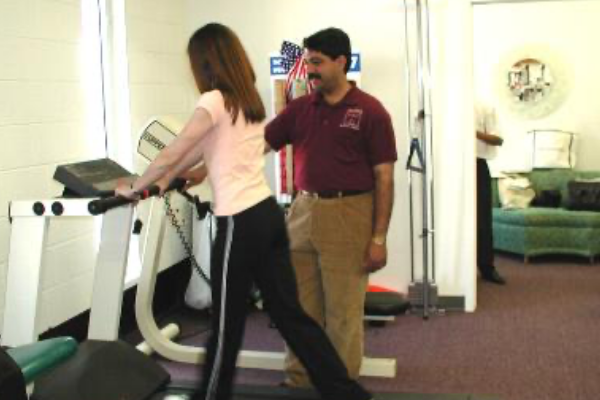Relieve Your Chronic Knee or Ankle Pain…
Chronic knee and ankle pain can interfere with your daily life, making it difficult to walk or drive, to get to and from work, or to even get out of your house and enjoy time with friends. For those who enjoy to workout, or athletes who depend on their body and their ability to move to make a living, the limitations posed by chronic knee or ankle pain can be incredibly frustrating.
Here are some tips that may help you in overcoming your path and put you on the right path to recovery.
Discover the underlying cause of your pain
Like is the case with so many forms of chronic pain, knee and ankle pain are often the result of poor motion of the joint, weakness, or decreased proprioception (the body’s ability to know where a joint is in space – balance). By addressing these underlying problems, you can alleviate pain and restore better health to your knee or ankle. A physical therapist is the medical expert trained to properly assess the movement of your joints, discovering what is not optimal, and restoring the normal mechanics of your joints.
Improve your range of motion
Are you performing daily stretches for you knee or ankle? Simple stretches to the hamstrings, calf, and quadriceps muscles can help to improve mobility of the joint. When muscles tighten from sitting too long or overactivity, they cause limited joint movement and more compression.
A daily stretching routine, can help to relieve the pressure on your joints. Stretches should be done carefully and gently. One may have a tendency to think that the harder they stretch the better, however longer and gentler stretches help the most.
Try these stretches. However, if you are unsure about your injury or how to perform the exercises correctly, speak to one of our therapists or talk to your physician first.
-
Hamstring stretch
-
Calf Stretch
-
Quadricep stretch
Improve the range of motion in your kneecap. After injuries, it is quite common for the kneecap to loose some of its ability to glide. Gently grab your kneecap and slightly move it up and down when you are sitting with your leg out straight and relaxed. In addition, try to gently pull the kneecap up. There should be no pain with any of these actions.
Improve your strength
The knee itself has no muscles, it is supported by the muscles surrounding it from the hips, hamstrings, quadriceps, and calf muscles. Many people experience chronic knee or ankle pain, because of poor hip and thigh strength. Simple exercises to improve the strength of these muscles, improve the mechanics of the knee and ankle joints, especially when walking or running.
Strengthen exercises you should focus on:
-
Inner thigh strengthening
-
Outside hip strengthening
-
Quadriceps strengthening
-
Hamstring strengthening
-
Calf strengthening
Improve your proprioception
Proprioception is your body’s ability to sense where it is in space. There are nerve endings that surround each joint in your body that help your brain sense this. They are especially dense in the knee and ankle joints to help with balance.
With any injury or prolonged inflammation, your ability to balance is affected. In addition, as you age, this sense decreases naturally. The good news is that with the right balance and strengthening exercises, you can restore and enhance this sense.
Exercises you should focus on:
-
Standing on one leg (with a nearby wall you can hold onto)
-
Calf raises
-
Marching or high stepping
Unfortunately, once you experience one form of knee or ankle pain, you have only increased your chances of experiencing further injury and thereby further pain. Instability in the knees and ankles makes you more susceptible to falling, and so more susceptible to injury. Having damage to one makes you more likely to compensate by putting unnecessary weight on the other.
Why You Should See a Physical Therapist
The quicker you address an injury and the faster you are able to recover and become free of the pain, the better off you’ll be at being able to prevent further injury from occurring.
In many situations, knee and ankle injuries will require surgery to correct any damage to muscles, tendons or ligaments.
Once any existing tears are repaired, the next course of action is to engage in physical therapy. The goal of physical therapy is to help build-up targeted muscles so that they are able to support the injured joint, thus reducing the amount of pressure put upon that joint at impact, and thereby reducing the amount of pain that you experience engaging in even simple tasks, like walking.
Talking with your physical therapist and coming up with a recovery strategy that includes regular PT coupled with on-going personal exercise, and of course guidance and support from your physical therapist as necessary can help you develop the strengthened muscles necessary to be free from ankle and knee pain.
Always consult your physical therapist or physician before starting exercises you are unsure of doing.







